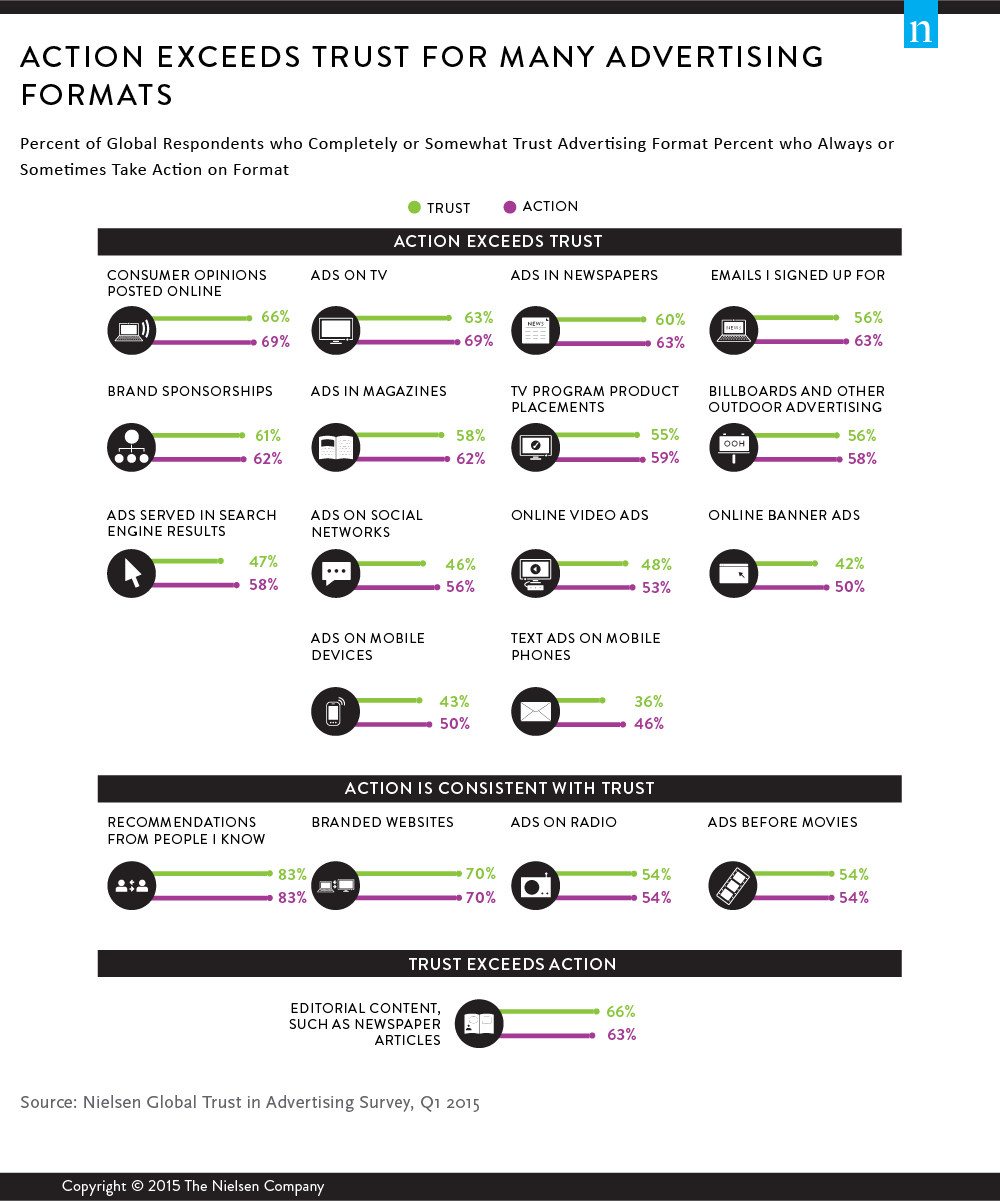Across any type of format, trust is an important component of advertising message resonance. But no matter the format, the desired end result is the same—action.
So while a relationship exists between the trust and action, is credibility a prerequisite to purchasing? The results of the latest Nielsen Global Trust in Advertising Report suggests not always: Even formats with lower trust levels can be extremely effective in driving consumers to the point of purchase. In fact, among global respondents, self-reported action exceeded stated trust for 14 of 19 advertising formats reviewed.
The same percentage of global respondents that trust the opinions of friends and family say they take action on these opinions at least some of the time (83% each). Similarly, self-reported trust and action are the same for branded websites (70% each).
For many paid advertising formats, however, self-reported action actually exceeds trust. That is, more consumers say they take action than find the ad trustworthy. This is particularly true for online and mobile formats. Self-reported action exceeds trust by more than double digits for ads served in search engine results (47% trust; 58% take action), ads on social networks (46% trust; 56% take action) and text ads on mobile phones (36% trust; 46% take action).
“The formats where action exceeds trust by the greatest margin share a common attribute: Easy access to products/services,” said Randall Beard, president, Nielsen Expanded Verticals. “You like it, you buy it. Online and mobile formats make it exceptionally easy for consumers to live in the moment and take quick action on the advertisement. Often, consumers simply click a link and they’re directed to a place where they can receive more information or purchase the item.”

Other findings from the Trust In Advertising report include:
- Millennials show the highest levels of trust in 18 of 19 advertising formats/channels, including TV, newspapers and magazines.
- More than eight-in-10 global respondents (83%) say they completely or somewhat trust the recommendations of friends and family, while two-thirds (66%) say they trust consumer opinions posted online.
- Humorous ads resonate most in strongly in Western markets; health-themed ads are rated highest in Latin America and ads depicting real-life situations are most appealing in Asia-Pacific and Africa/Middle East.
- High-energy/action advertising themes resonate more with younger respondents, while pets/animal-centered ads resonate more with older respondents.
For more detail and insight, download Nielsen’s Global Trust In Advertising report.
About the Nielsen Global Survey
The Nielsen Global Trust in Advertising Survey was conducted between Feb. 23 and March 13, 2015, and polled more than 30,000 consumers in 60 countries throughout Asia-Pacific, Europe, Latin America, the Middle East, Africa and North America. The sample has quotas based on age and sex for each country based on its Internet users and is weighted to be representative of Internet consumers. It has a margin of error of ±0.6%. This Nielsen survey is based only on the behavior of respondents with online access. Internet penetration rates vary by country. Nielsen uses a minimum reporting standard of 60% Internet penetration or an online population of 10 million for survey inclusion. The Nielsen Global Survey, which includes the Global Consumer Confidence Index, was established in 2005.



